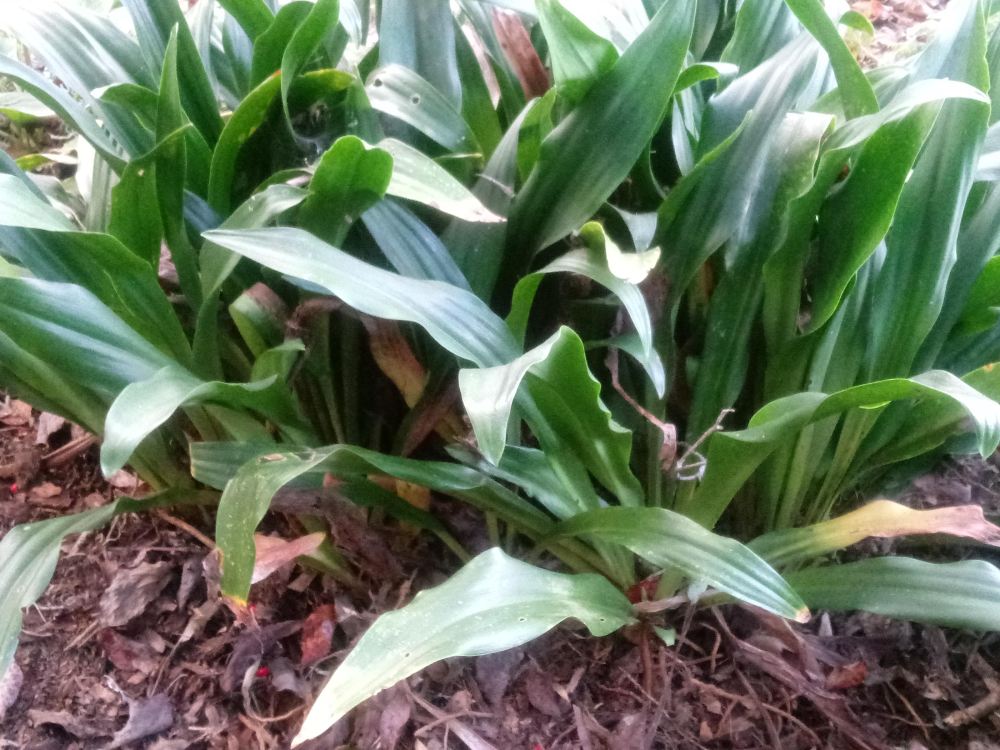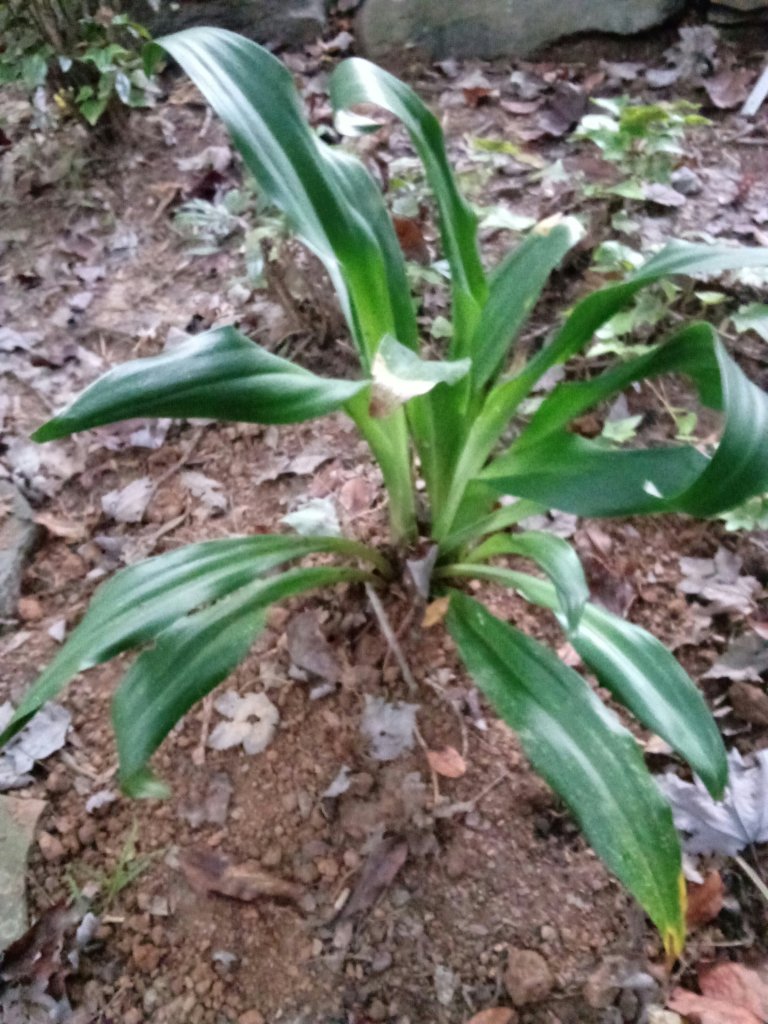Yesterday, ten substantial divisions were taken from a clump of Japanese Sacred lily (Rohdea japonica, below). Ten more could be taken without noticing that the original clump is diminished.
Sections of the dense clump were undercut, but the inch and a half thick rhizome could not be pulled loose by hand. Admittedly, I am often hesitant to use excessive force since I tend to break things, so instead, a spade sliced through easily. The substance of the divisions reassures that they are likely to survive without any care, and while we’ve been in a period of unusual early autumn heat, an inch of rain will assure a good start, though ground moisture remains high even in dry shade.
I gave no thought to transplanting Sacred lilies until seeing handsome gallon pots in the garden center a few days ago. Berries were prominently displayed, and though I’ve never seen flowers or berries in the garden, I’m certain they’re there if only I looked at the right time. So, this barely acknowledged evergreen has now become a treasure. Maybe. At least there will be an opportunity to appreciate it more, now that ten are spread through the garden instead of only one thick clump beneath the dogwood.

Without a doubt, it is an unusual evergreen, looking roughly like a dark green, leathery leafed hosta with an upright habit. And so, I caught the bug (mildly), checking prices of variegated types online an hour after transplanting, which is clearly ridiculous (also sad, but telling of how things go in this garden and why there are too many of too many different plants) that a nearly forgotten about plant is suddenly a favorite. Thankfully, before I got too carried away, exorbitant prices quickly ended any thoughts of adding variegated types that are most interesting, but evidently highly prized and priced to reflect it.
Maybe someday I’ll be enthusiastic enough that this price will seem reasonable, but not today. Perhaps I can arrange a swap if there’s someone out there with a clump of a fine looking variegated type that’s grown too large. I can’t trade off the children since they’re long gone, but how about five large divisions of the green Sacred lily in trade for one skimpy variegated clump?
What will you have interplanted with your rhodea? I’m trying cyclamens.
I’ve planted rodhea into small gaps between more spreading perennials. I think one area will work particularly well with rodhea planted beside yellow leafed Japanese Forest grass. Others are planted next to hellebores which might not be enough difference in height to be effective.
Variegated? Well, I have never seen a variegated one. Actually, I have not seen even a green one in quite a while. I do not often look for them, and the garden where I know they live is one that I have not seen in many years. They are uncommon, even in Los Angeles. They are not grown here that I am aware of.
I don’t think that rohdea is popular anywhere in the US. It’s not much different than an evergreen hosta, without prominent flowers. I ignored this one long enough that harvesting ten division barely made a dent in the clump, so it’s relatively rare in this country, but not one that is destined for popularity.
Oh, one of ‘those’. I did that with various specie of yucca. I enjoyed them so much, but there are reasons why most specie are not popular. Their lack of popularity will not stop me from growing them.
I’m thankful there are small growers who grow the oddballs that aren’t popular with the masses.
For an example of variegated rhodea
https://www.plantdelights.com/products/rohdea-japonica-gunjaku
Any other vendors that sell a variety of rhodea?
My source for out of the ordinary plants is plantlust.com. Plant Delights is one of their sources, as well as several Oregon and Washington growers who feature many southeast Asian natives. So far, I can resist three inch pots for $30+.